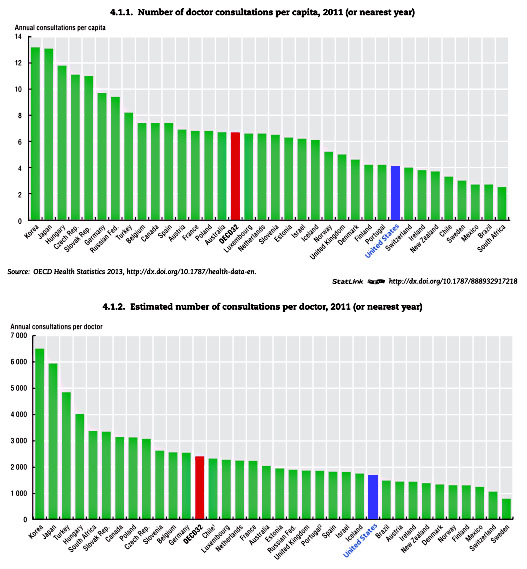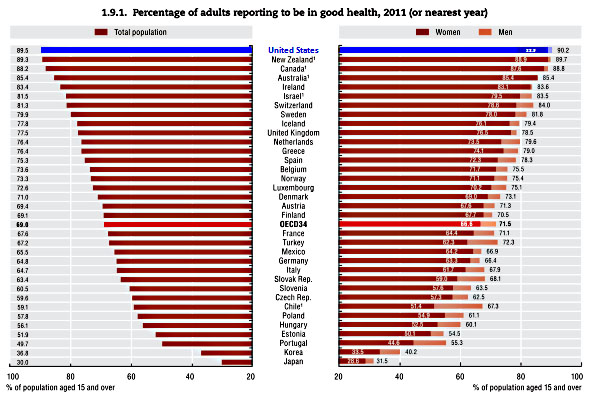The 2013 version of the OECD’s “Health at a Glance” is out today, which means that if I’d waited a day I could have posted the very latest data on the number of doctors per capita in the United States compared to other countries. Not to worry, though: nothing much has changed since yesterday. We still don’t have very many doctors, even though we pay them far more than in most other countries.
In any case, “at a glance” means 209 pages to the OECD, so there’s plenty of other stuff to chew on today. I’ll pick out two tidbits for you. First, the chart below shows the number of doctor visits per year. We’re very low. Despite spending far, far more on health care than any other country—$8,500 per person compared to about $4,000 for other rich countries—we don’t get to see our doctors very often—about four times a year compared to six for the rest of the world. So does this mean that American doctors are lightly worked compared to other countries? As the next chart down shows, yes it does! The average American doc sees about 1,800 patients per year. The average for other rich countries is about 2,500. Again, this is despite the fact that American doctors are very highly paid.

Next up is a chart brought to my attention by Paul Waldman, and it could be one of the greatest and most instructive health care charts ever made. It shows what people think about their health. And despite the fact that by any objective measure, American health is mediocre at best and our health system is both expensive and lousy, Americans think they’re in great health. They think they’re in the best health of any country in the world!
This is Stockholm Syndrome at its finest. Apparently one of the reasons we don’t mind the lousy service and high cost of our health care system is because our health care system has convinced us that it’s great and, therefore, our health must be great too. We’re Number 1, and we won’t put up with anyone who tells us otherwise.


















